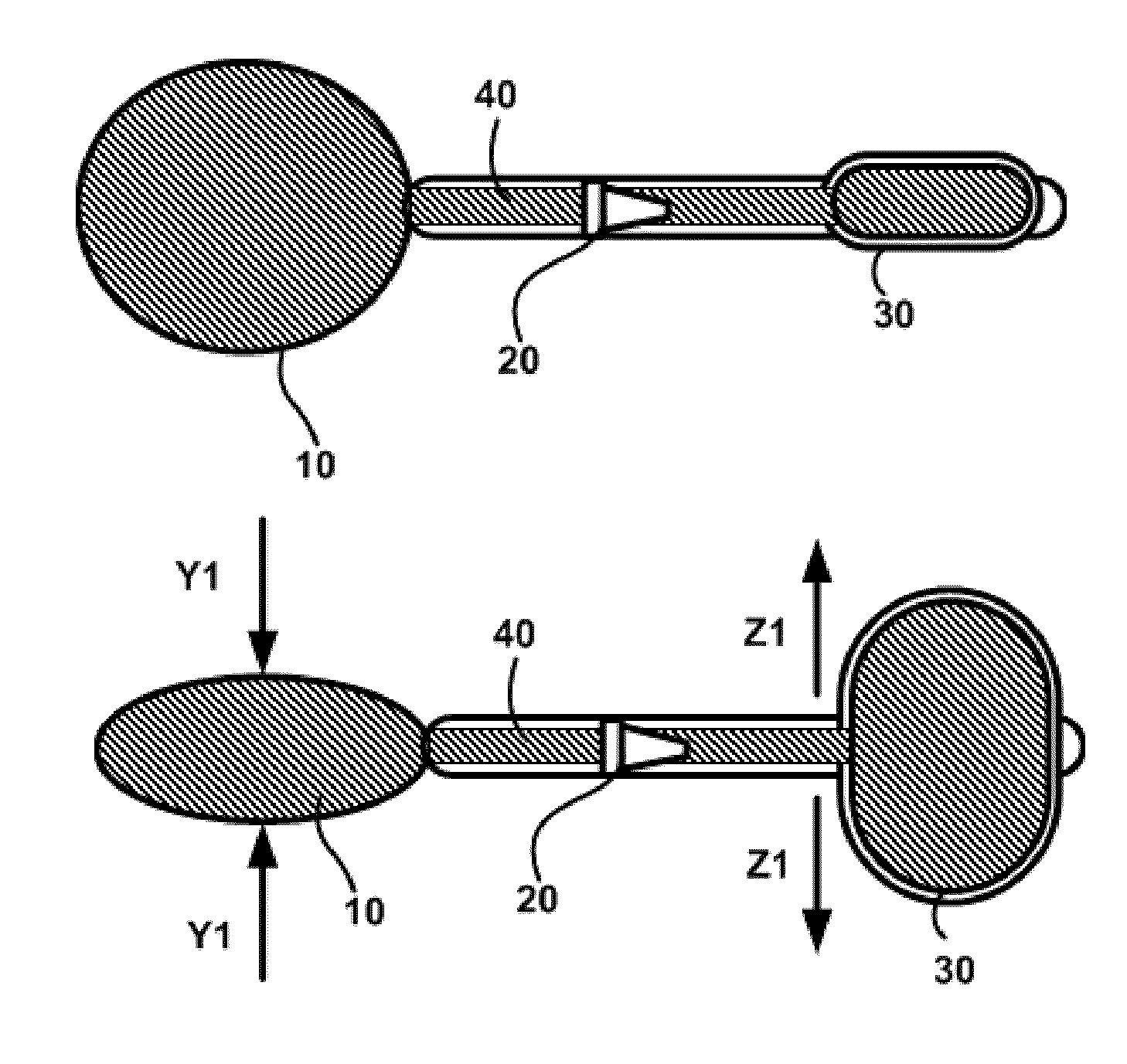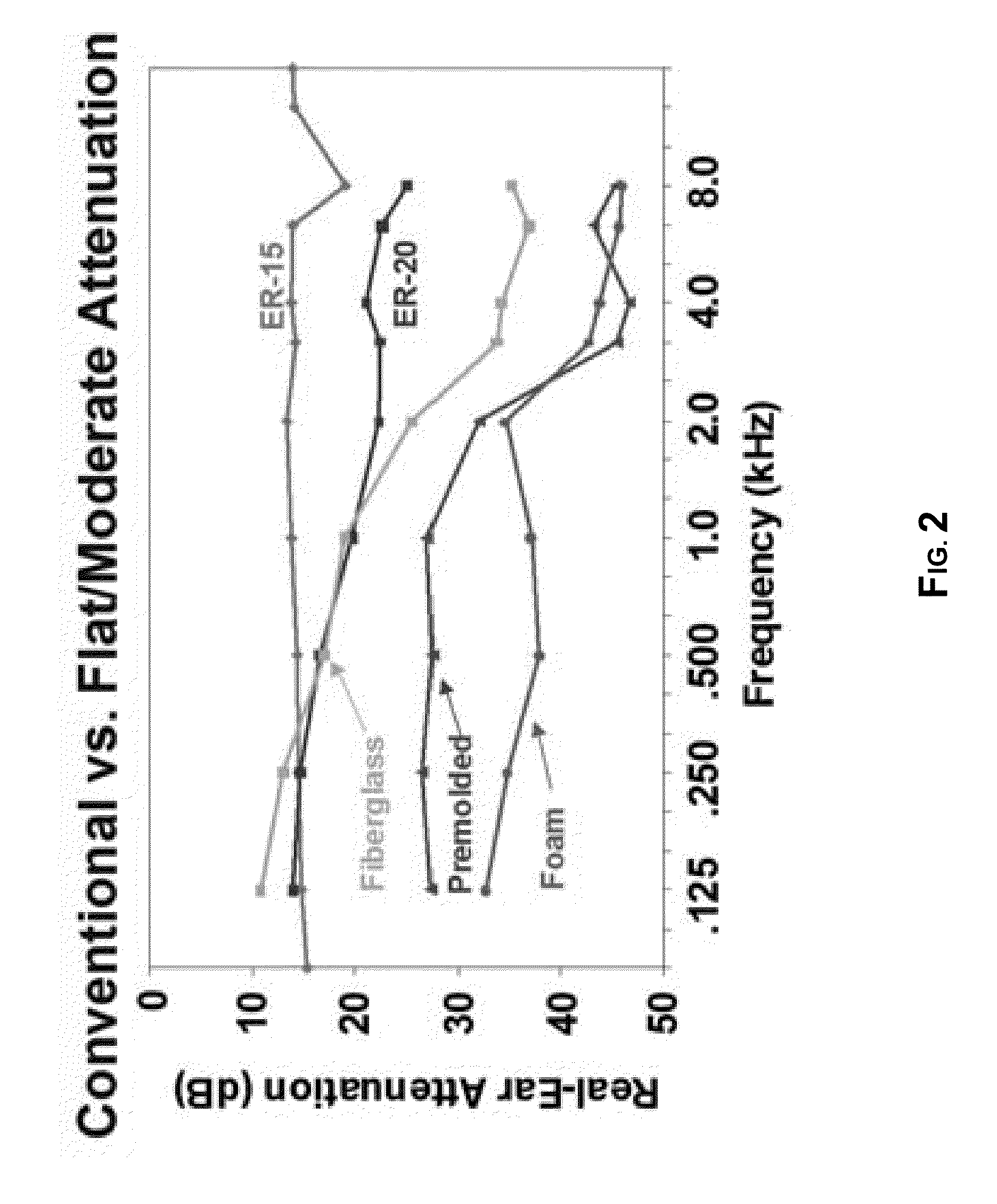Method and structure for achieving spectrum-tunable and uniform attenuation
a spectrum-tunable and uniform technology, applied in the field of acoustic shaping devices, can solve the problems of unnatural imbalance in pitch perception, pitch perception and other auditory experiences which rely on frequency-based cues, and most hearing protections fail to deliver a flat attenuation across the frequency spectrum, so as to reduce the amplitude of transmitted acoustic spectrum
- Summary
- Abstract
- Description
- Claims
- Application Information
AI Technical Summary
Benefits of technology
Problems solved by technology
Method used
Image
Examples
Embodiment Construction
[0098]Reference will now be made in detail to various exemplary embodiments of the invention. It is to be understood that the following discussion of exemplary embodiments is not intended as a limitation on the invention. Rather, the following discussion is provided to give the reader a more detailed understanding of certain aspects and features of the invention.
[0099]Processes, techniques, apparatus, and materials as known by one of ordinary skill in the art may not be discussed in detail but are intended to be part of the enabling description where appropriate. For example, specific materials may not be listed for achieving each of the targeted properties discussed, however, one of ordinary skill in the art would be able, without undo experimentation, to determine the materials needed given the enabling disclosure herein.
[0100]It is noted that similar reference numerals and letters may be used to refer to similar items in multiple figures. Thus, once an item is defined in one figu...
PUM
 Login to View More
Login to View More Abstract
Description
Claims
Application Information
 Login to View More
Login to View More - R&D
- Intellectual Property
- Life Sciences
- Materials
- Tech Scout
- Unparalleled Data Quality
- Higher Quality Content
- 60% Fewer Hallucinations
Browse by: Latest US Patents, China's latest patents, Technical Efficacy Thesaurus, Application Domain, Technology Topic, Popular Technical Reports.
© 2025 PatSnap. All rights reserved.Legal|Privacy policy|Modern Slavery Act Transparency Statement|Sitemap|About US| Contact US: help@patsnap.com



